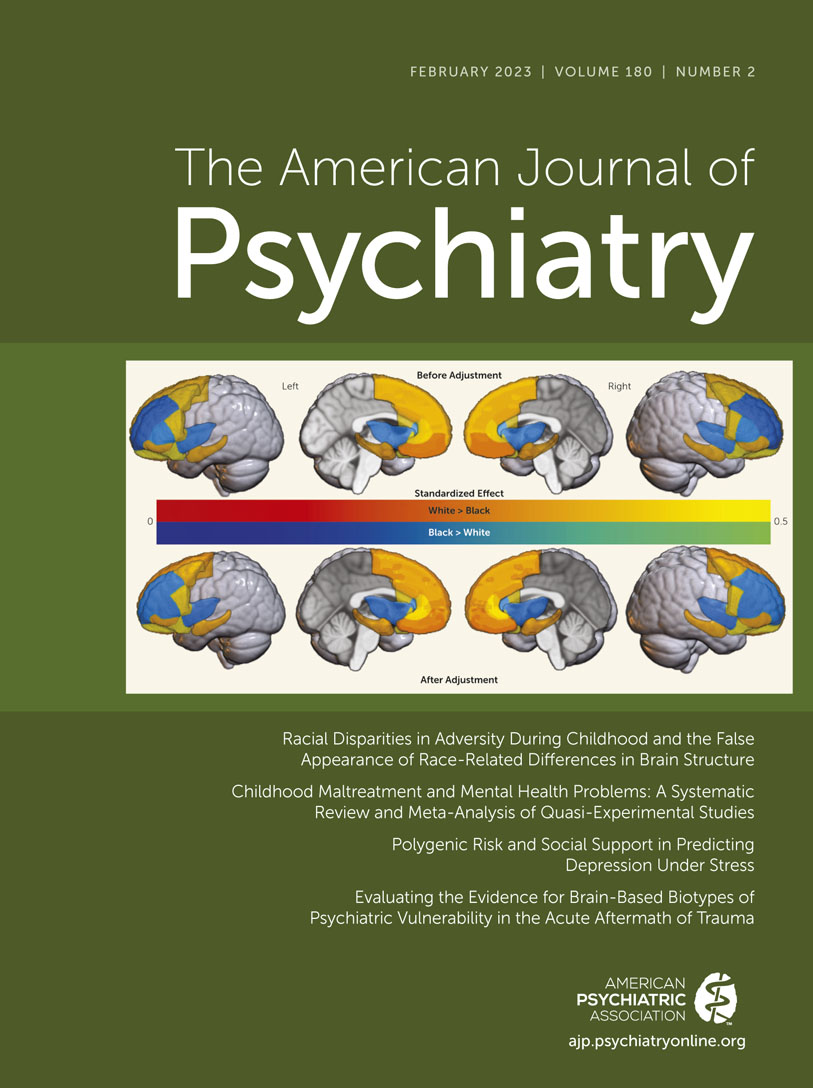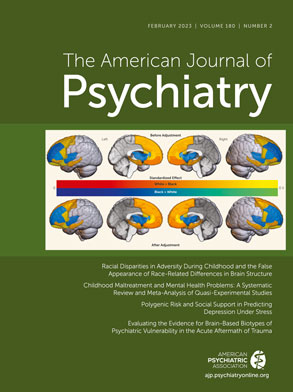At its April 2021 meeting, the American Psychiatric Association (APA) Board of Trustees approved “The American Psychiatric Association Practice Guideline for the Treatment of Patients With Eating Disorders.” The
full guideline is available at APA’s Practice Guidelines website.
The goal of this guideline is to improve the quality of care and treatment outcomes for patients with eating disorders, as defined by the Diagnostic and Statistical Manual of Mental Disorders, Fifth Edition, Text Revision (DSM-5-TR;
American Psychiatric Association 2022). Since publication of the last American Psychiatric Association (APA) practice guideline on eating disorders (
American Psychiatric Association 2006), there have been many studies on psychotherapies for individuals with these diagnoses as well as some studies on pharmacotherapies. Despite this, there are still substantial gaps in the availability and use of evidence-based treatments for individuals with an eating disorder (
Kazdin et al. 2017). This practice guideline aims to help clinicians enhance care for their patients by reviewing current evidence and providing evidence-based statements (
Box 1) that are intended to increase knowledge, improve assessment, and optimize treatment of eating disorders.
The lifetime prevalence of eating disorders in the United States is approximately 0.80% for anorexia nervosa (AN), 0.28% for bulimia nervosa (BN), and 0.85% for binge-eating disorder (BED) (
Udo and Grilo 2018), although estimates can vary depending on the study location, sample demographic characteristics, case finding, and diagnostic approaches (
Galmiche et al. 2019;
Santomauro et al. 2021;
Wu et al. 2020). Furthermore, data suggest an increasing incidence of eating disorders and inpatient care for eating disorders, particularly AN, during the COVID-19 pandemic (
Agostino et al. 2021;
Asch et al. 2021;
Otto et al. 2021;
Taquet et al. 2021). Importantly, the lifetime burdens and psychosocial impairments associated with an eating disorder can be substantial because these illnesses can persist for decades, and they typically have an onset in adolescence or early adulthood (
Udo and Grilo 2018).
In the United States, for the 2018–2019 fiscal year, the total economic costs of eating disorders were estimated to be $64.7 billion, with an additional $326.5 billion attributable to reductions in well-being associated with eating disorders (
Streatfeild et al. 2021).
Accordingly, the overall goal of this guideline is to enhance the assessment and treatment of eating disorders, thereby reducing the mortality, morbidity, and significant psychosocial and health consequences of these important psychiatric conditions.
Overview of the Development Process
Since the publication of Clinical Practice Guidelines We Can Trust (
Institute of Medicine 2011), a report of the Institute of Medicine (now known as National Academy of Medicine), there has been an increasing focus on using clearly defined, transparent processes for rating the quality of evidence and the strength of the overall body of evidence in systematic reviews of the scientific literature. This guideline was developed using a process intended to be consistent with the recommendations of the Institute of Medicine (
Institute of Medicine 2011) and the Principles for the Development of Specialty Society Clinical Guidelines of the Council of Medical Specialty Societies (2012). Parameters used for the guideline’s systematic review are included with the full text of the guideline. The APA website features a full description of the guideline development process.
Rating the Strength of Research Evidence and Recommendations
Development of guideline statements entails weighing the potential benefits and harms of the statement and then identifying the level of confidence in that determination. (See Appendix G in the supplemental information accompanying the
full guideline online for detailed descriptions of the potential benefits and harms for each statement.) This concept of balancing benefits and harms to determine guideline recommendations and strength of recommendations is a hallmark of GRADE (Grading of Recommendations Assessment, Development and Evaluation), which is used by multiple professional organizations around the world to develop practice guideline recommendations (
Guyatt et al. 2013). With the GRADE approach, recommendations are rated by assessing the confidence that the benefits of the statement outweigh the harms and burdens of the statement, determining the confidence in estimates of effect as reflected by the quality of evidence, estimating patient values and preferences (including whether they are similar across the patient population), and identifying whether resource expenditures are worth the expected net benefit of following the recommendation (
Andrews et al. 2013).
In weighing the balance of benefits and harms for each statement in this guideline, our level of confidence is informed by available evidence (see Appendix C in the supplemental information accompanying the
full guideline online), which includes evidence from clinical trials as well as expert opinion and patient values and preferences. Evidence for the benefit of a particular intervention within a specific clinical context is identified through systematic review and is then balanced against the evidence for harms. In this regard, harms are broadly defined and may include serious adverse events, less serious adverse events that affect tolerability, minor adverse events, negative effects of the intervention on quality of life, barriers and inconveniences associated with treatment, direct and indirect costs of the intervention (including opportunity costs), and other negative aspects of the treatment that may influence decision making by the patient, the clinician, or both.
Many topics covered in this guideline have relied on forms of evidence such as consensus opinions of experienced clinicians or indirect findings from observational studies rather than research from randomized trials. It is well recognized that there are guideline topics and clinical circumstances for which high-quality evidence from clinical trials is not possible or is unethical to obtain (
Council of Medical Specialty Societies 2012). For example, many questions need to be asked as part of an assessment and inquiring about a particular symptom or element of the history cannot be separated out for study as a discrete intervention. It would also be impossible to separate changes in outcomes due to assessment from changes in outcomes due to ensuing treatment. Research on psychiatric assessments and some psychiatric interventions can also be complicated by multiple confounding factors such as the interaction between the clinician and the patient or the patient’s unique circumstances and experiences. The GRADE working group and guidelines developed by other professional organizations have noted that a strong recommendation or “good practice statement” may be appropriate even in the absence of research evidence when sensible alternatives do not exist (
Andrews et al. 2013;
Brito et al. 2013;
Djulbegovic et al. 2009;
Hazlehurst et al. 2013). For each guideline statement, we have described the type and strength of the available evidence as well as the factors, including patient preferences, that were used in determining the balance of benefits and harms.
Guideline Scope
The scope of this document is shaped by the diagnostic criteria for eating disorders and by the available evidence as obtained by a systematic review of the literature through September 2021, particularly focusing on AN, BN, and BED as defined by DSM-III, DSM-III-R, DSM-IV, DSM-IV-TR, DSM-5, or ICD-10. This practice guideline addresses evidence-based pharmacological, psychotherapeutic, and other nonpharmacological treatments for eating disorders in adolescents, emerging adults, and adults. In addition, it includes statements related to assessment and treatment planning, which are an integral part of patient-centered care.
Our systematic review attempted to include literature on avoidant/restrictive food intake disorder (ARFID); however, rigorous clinical trial data were not available due to the relative recency of the introduction of this diagnosis. We have included some discussion of ARFID in the implementation sections of this document, particularly as it relates to assessment and treatment planning. We specifically excluded rumination disorder and pica from our search of the literature due to their typical age of onset in infancy or childhood and the limited evidence on their treatment. We also excluded treatment of obesity from the scope of this guideline because obesity is not categorized as an eating disorder.
Data are also limited on individuals with eating disorders and significant physical health conditions or co-occurring psychiatric conditions, including substance use disorders. Many of the available studies of eating disorders did not analyze data separately for these patient subgroups or excluded individuals with these comorbidities. Nevertheless, in the absence of more robust evidence, the statements in this guideline should generally be applicable to individuals with co-occurring conditions. Additionally, although treatment-related costs are often barriers to receiving treatment and cost-effectiveness considerations are relevant to health care policy, cost-effectiveness considerations are outside the scope of this guideline.
The full text of the practice guideline describes aspects of guideline implementation that are relevant to individual patients' circumstances and preferences. A detailed description of research evidence related to the effects of pharmacological and nonpharmacological treatments in individuals with eating disorders can be found in the appendices accompanying the full guideline at
psychiatryonline.org/guidelines.
Acknowledgments
APA and the Guideline Writing Group especially thank Laura J. Fochtmann, M.D., M.B.I., Blair Uniacke, M.D., Seung-Hee Hong, and Jennifer Medicus for their outstanding work and effort in developing this guideline. APA also wishes to acknowledge the contributions of other APA staff including Michelle Dirst, Andrew Lyzenga, and Kristin Kroeger Ptakowski. APA wishes to give special recognition to Joel Yager, M.D. for his decades of contributions to APA and its practice guidelines, including his work on the Systematic Review Group and serving as Chair of the Eating Disorders Writing Group for three prior versions of this guideline. APA also thanks the APA Committee on Practice Guidelines (Daniel J. Anzia, M.D., Chair), liaisons from the APA Assembly for their input and assistance, and APA Councils and others for providing feedback during the comment period.

